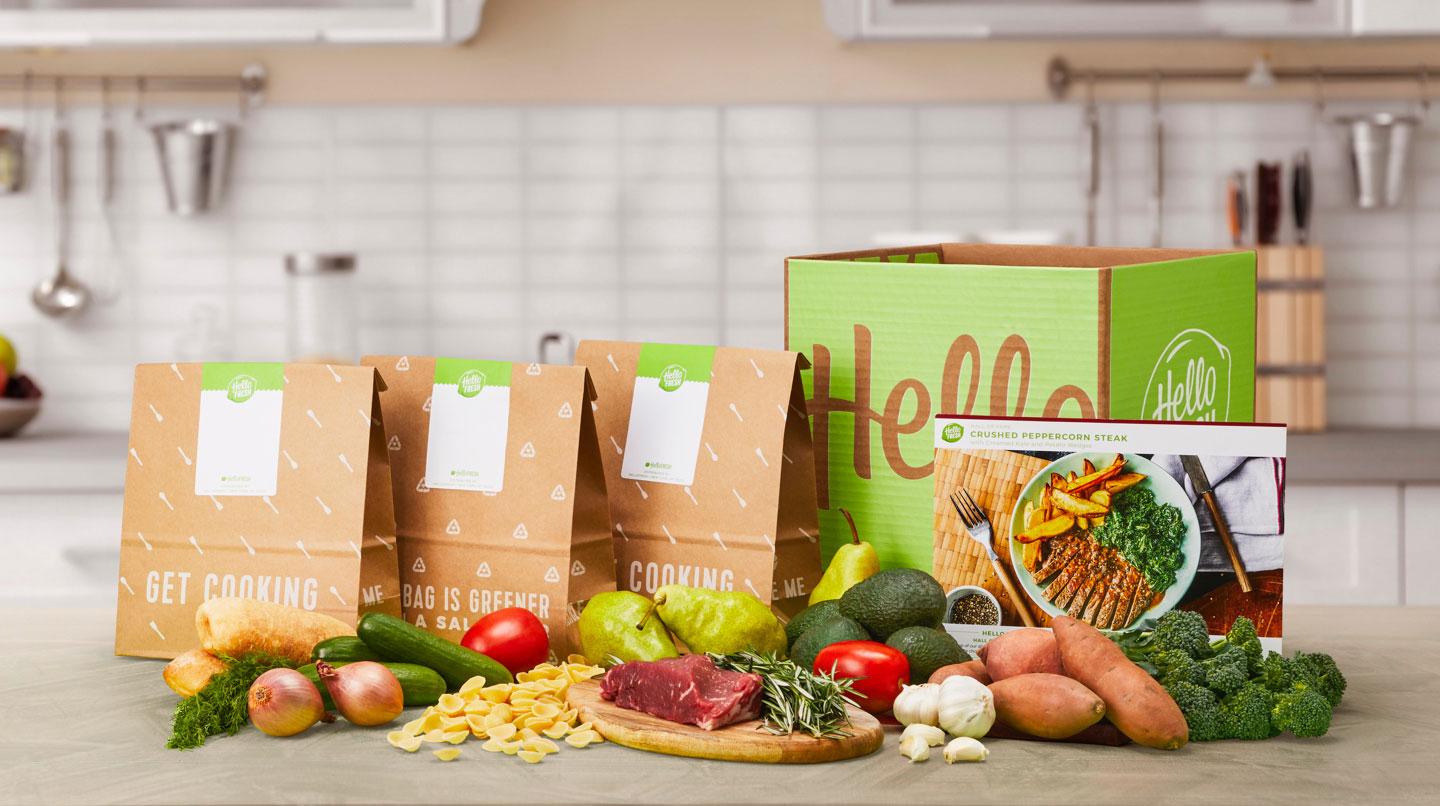Few innovations have changed the way we eat like the meal kit. Unheard of just a decade ago, the meal kit model is now a worldwide phenomenon. Berlin-based HelloFresh is the world’s leading meal kit company, sending boxes of fresh food and step-by-step recipes to millions of homes in 11 markets.
Partnering with Adyen on payments has been a key ingredient in the company’s success. HelloFresh uses a subscription model, another hit with consumers, but one that can bring its share of challenges.
Alex Rhodes, country manager for Adyen in Canada, sat down with Jake Hershman, the HelloFresh head of payments in North America, to discuss daily hurdles, big-picture payments strategy, and a recent foray into Canada for both companies.

Alex Rhodes of Adyen and Jake Hershman of HelloFresh.
Switching sides
Alex: Your education is in history and human-computer interaction. How did you end up in payments?
Jake: I’ve always been interested in technology, but I knew I wouldn’t be an engineer. I wanted to sit between both worlds, business and tech.
I spent some time in corporate strategy for American Express and product management at Mastercard. So essentially, I went from strategy roles at the largest payments companies to running payments for one of the largest merchants. I liked switching to that side of the table.
Alex: Any big surprises from switching to the merchant side?
Jake:Well, I used to take people out to lunch, and now they take me out to lunch.
A daily crusade: preventing churn
Alex: What are some of the payments challenges you see in such a competitive industry?
Jake:Every single time we go to charge a card, there’s a possibility for disruption to the customer experience and for them to churn. As a recurring business, customer retention is absolutely critical for us.
Within retention, there’s voluntary and involuntary churn, and optimizing recurring payments plays a big role in preventing involuntary churn.
Alex: What’s most important in battling involuntary churn?
Jake:First you need access to your data. For us, that’s being able to view initial vs recurring transactions, as well as to slice by transaction level, shopper level, and order level. Once this foundation is in place, different strategies and tools can be used to improve conversion on each segment and make decisions about the business.
Alex: Many companies see payments as a commodity, but your management team seems to look at things a bit differently?
Jake:For us, payments can help drive revenue, and on that side it’s about acceptance rate. Working with our management, we all recognize the value of improving that rate and how increasing our acceptance rate can have a huge impact on the business.
We’ve seen tremendous improvement in the past year. It’s the result of so many different projects.

Berlin-based HelloFresh sends meal kits to homes in 11 markets.
(photo courtesy of HelloFresh)
Alex: How does Adyen help with that?
Jake:There’s a degree of data visibility within Adyen’s platform that gives us a lot of advantages. We can see the data flow all the way down the entire payments value chain.
Then, there are your optimization tools. RevenueAccelerate [which optimizes authorization rates], RealTime Account Updater [updating expired cards in real time], and other features. Those tools give us a real benefit.
Alex: What do you look for in a payments partner? Any must-haves?
Jake:Beyond data, it’s the ability to support different and new transaction paradigms. Things like merchant-initiated transaction flags vs card-on-file, 3DS 2.0 in our European markets, or new initiatives like network tokenization.
What’s nice with Adyen is you’ve made it your mission to develop and deliver on new, innovative capabilities as soon as possible. You’re giving us the tools to further grow our business.

Jake Hershman, HelloFresh head of payments in North America.
O Canada
Alex: You recently changed payment providers in Canada. Can you tell me about that?
Jake:Sure. We were an early merchant pilot partner for Adyen’s own acquiring infrastructure in Canada. We said yes, absolutely, but it wasn’t an overnight switch. We ran A/B tests over a period of time.
Through that, we saw a more meaningful acceptance rate increase, and so we switched fully over. It’s huge when you multiply that out over the lifetime value of a customer. When it came time to migrate more volume in Canada, it was a no-brainer.
For us, we were also eager to keep everything in one spot and have that full visibility and flow of information. We’ve seen that this brings value from an operational and financial perspective in our other markets.
Alex: What’s an example of a time-saver on the operations side?
Jake:It’s as simple as no longer receivingchargebacksvia fax machine, or streamlining time-consuming processes like reconciliation.
Alex: Are there any payment trends you’re monitoring closely?
Jake:PSD2, strong customer authentication requirements, and all the impacts on recurring business models in Europe. I’m in the camp that says this will be so transformative, we should expect to see it show up in other markets. Biometrics for payments has also been huge.
I see a broader theme emerging: The combination of identity and payment. The interesting bit is that the payment is built into and tied to your identity. Let’s say you have two credentials — a driver’s license and your payment details — they’re now intertwined and a part of how you move through the world.
Alex: What words of wisdom would you pass on to someone new to payments?
Jake:Learn as much as you can. The technology is changing on a daily basis, even faster than other industries out there. Also, stay global in nature. People tend to stay very centered in their local markets, but payments are global. There’s a whole world out there, and whether or not the payments technology exists in your world today, it will tomorrow.
Fresh insights, straight to your inbox
By submitting your information you confirm that you have read Adyen's Privacy Policy and agree to the use of your data in all Adyen communications.
